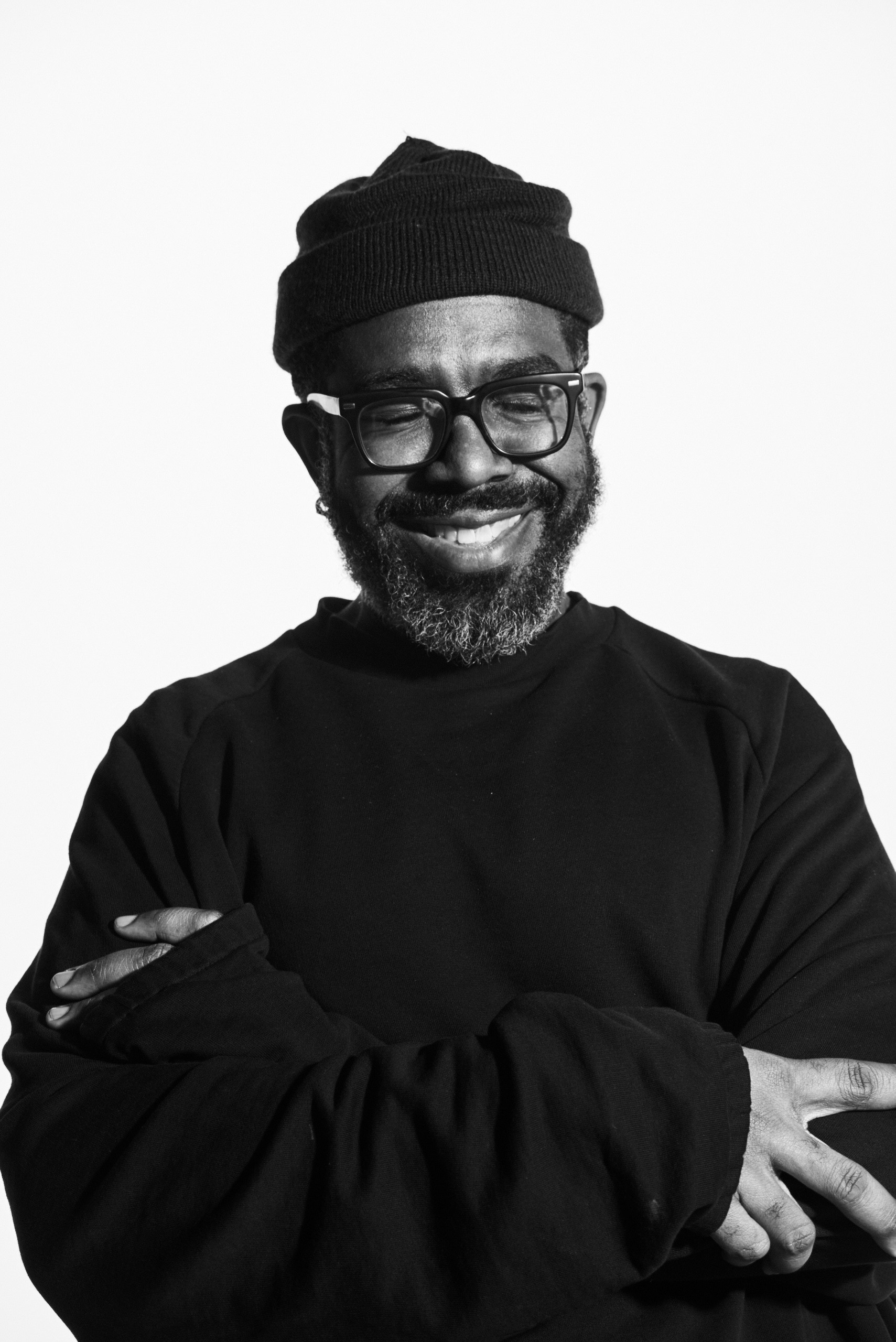If you’re lucky enough to know someone from Detroit, or ever had the pleasure to visit the Motor City, you know that there’s this Midwestern cool about its natives. Motown, the Detroit Pistons, and the automotive industry aside, style was always a key currency in this town – Detroit vs. Everybody style, unapologetically so.
Aaron Potts hails from that very terrain, and you could say he himself defines some of that very esthetic – seasoned, forthright, soulful. With a fashion CV of tenacity and ambition, this worldly art and fashion enthusiast is living his dreams out loud as a Detroit Brooklynite! Inspired by all things glamorous and beautiful, Potts has an innate desire for his clients to bask in self-expression and individualism through the non-binary designs he creates for his APOTTS label. Living by the philosophy that “real style is about spirit, not physical differences or trends,” the designer’s brand exudes effortless, comfortable, bold, luxurious style. In a lane all its own, you’ll find Aaron Potts vs. Everybody.
You were born in Detroit, Michigan, where style emanated from the streets…were you influenced by that revelation?
Absolutely! I grew up in Detroit in a working class, church going family. But we were a church going family that liked to party on Friday nights! I had the influence of the church and the influence of the streets, and the two collided. One thing about Detroit that most are unaware of, there is a music and dance culture that really goes beyond what we know as Motown and Gospel, which is House and Techno. We had a local dance TV show from the 1970s called The Scene with local young adults and high school kids from Detroit that we heeded as our own version of Soul Train. That show made such a huge impact on me in terms of style and presence and creativity and individuality. That mixture of church and the street, the music scene, and all these things put together correlated on that tv show.
Your designs are unisex and gender neutral. What prompted you to take this direction?
When I started the collection, my aesthetic came from me designing pieces I liked for myself. My circle of friends are creatives and my girlfriends loved and wanted the clothes I designed for men. The collection started out as menswear, but there’s this practicality and usefulness to it and the women who saw the collection were able to personalize it. They would say: ” Omg! I’m going to wear this jumpsuit, with a sports bra and a pair of high heels!” or “Omg! I’m going to wear this pair of drop crotch pants with a crop tee and Birkenstocks!” That’s really how it came to be. It wasn’t out of a trend, it was who responded to it.
You have a very impressive background of institutions of whom you’ve designed for before initiating your own collection. For those unfamiliar with your journey, would you mind sharing those accomplishments?
I’ve been in the industry for many years. I am a Parsons graduate, and my first job was working for Emanuel Ungaro on the diffusion line in the U. S. I worked with them for a while before transitioning to Anne Klein. I’ve worked at Victoria Secret designing sleepwear and then moved on to Ellen Tracy, which at the time was the powerhouse bridge company when bridge still existed. That was a dream job for a person at my age at that time. It was still very much old school Seventh Avenue. We had an amazing sample room, amazing pattern makers, unbelievable resources and we worked with beautiful designer fabrics. It was such a great training for me, and I’ll always value that experience. I progressed on to work and live in Munich, Germany and design for Escada, and at that point, I was a senior level designer. That was a dream — working in this amazing atelier, with designer $40 per yard fabric, and actually being able to retail it. We were selling a ton of that stuff! I was able to build my editorial book, and I’ve been in every Vogue — American Vogue, French Vogue, Italian Vogue, German Vogue. That was amazing! I came back to the States to design for Badgley Mischka, and then moved on to design for KaufmanFranco and a few other smaller institutions, but my training ground was American sportswear and that will always be where my roots are.
Your recent collection, “Some Folks And Other Things,” is so special and unique in its own right – and very undaunting with lush, luxurious textiles. What would you insist is your utmost favorite fabric to construct with?
I love what I call “parachute cloth.” It’s a cotton and synthetic blend, and it’s airy and crisp and seasonless, doesn’t wrinkle, and it’s waterproof. I did a photo shoot on the beach where I had one of my models get in the ocean in the outfit, and the clothes never got wet. I would say that is my favorite.





